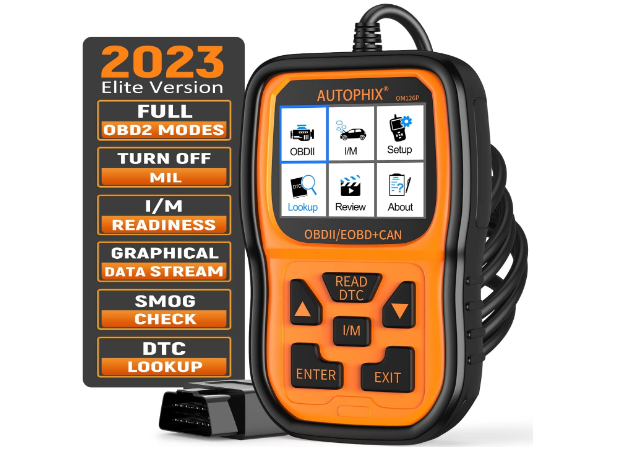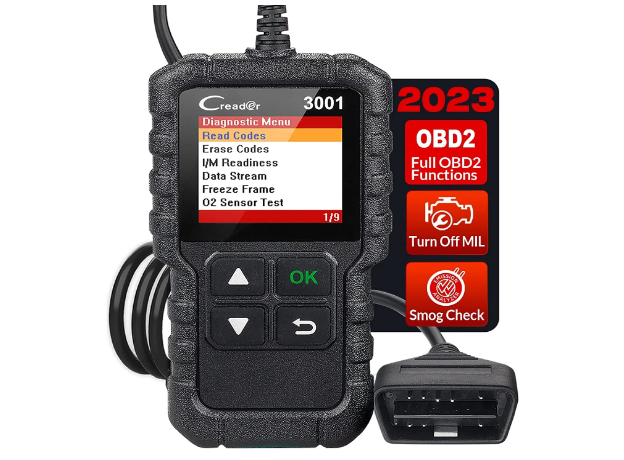
Explanation of the engine check light and its significance
The engine check light, otherwise called the check engine light, is a warning indicator on a vehicle’s dashboard that enlightens when there is a possible issue with the engine or emissions system. It is an essential component of the installed diagnostics system, intended to alert drivers of potential issues that require consideration. The meaning of the engine check light lies in its capacity to give an early location of engine issues, permitting drivers to make a brief move and forestall further harm or breakdowns. Overlooking the check engine light can prompt more serious issues, diminished fuel efficiency, and potential security perils, making it crucial to address the hidden issue with the assistance of a certified mechanic or diagnostic tool.
Importance of diagnosing and addressing engine issues promptly
Diagnosing and tending to engine issues immediately is of the utmost significance because of multiple factors. Right off the bat, it prevents further harm to the engine, which can bring about additional serious and expensive repairs down the line. The ideal conclusion additionally guarantees the security of the driver and travelers by limiting the risk of abrupt breakdowns or mishaps. Moreover, tending to engine issues immediately can assist with further developing fuel efficiency and general execution, prompting better driving encounters and likely requiring reserve funds over the long haul. At long last, a brief conclusion and fix contribute to decreasing unsafe emissions and advancing a cleaner and better climate.
What is an Engine Check Light Reader?
A. Definition and purpose of an engine check light reader
An engine check light peruser, otherwise called an OBD-II scanner, is a gadget used to analyze and investigate engine-related issues in vehicles. It is intended to interact with the installed PC system, which screens different engine boundaries and triggers the engine check light when an issue is distinguished. The motivation behind an engine check light peruser is to recover and decipher diagnostic difficulty codes (DTCs) put away in the vehicle’s PC. These codes give significant data about the particular issue, empowering vehicle proprietors or mechanics to proficiently distinguish and determine the issue. By utilizing an engine check light reader, people can save time, cash, and pointless mystery with regard to diagnosing engine issues.
B. Overview of OBD-II scanners and diagnostic tools
OBD-II scanners and diagnostic tools are fundamental gadgets utilized in the car business to analyze and investigate vehicle issues. They are intended to speak with a vehicle’s installed PC system, getting to and deciphering information connected with engine execution, emissions, and other key boundaries. These tools empower vehicle proprietors, mechanics, and professionals to recognize and resolve issues effectively, getting a good deal on pointless repairs. OBD-II scanners come in different structures, including handheld gadgets and cell phone applications, offering comfort and usability. With their capacity to recover diagnostic difficulty codes (DTCs) and give ongoing information, OBD-II scanners are important tools for keeping up with and improving vehicle execution.
C. Different types and features of engine check light readers
Engine check light perusers come in different kinds and deal with a scope of highlights to take care of various requirements. Fundamental code perusers are financially well-disposed choices that recover and show diagnostic difficulty codes (DTCs) from the vehicle’s installed PC system. Improved scanners have further developed functionalities, including the capacity to see live information streams, perform component tests, and access producer explicit codes. Some engine check light perusers likewise offer extra highlights like freeze outline information, preparation screens, and the capacity to reset the check engine light in the wake of resolving the issue. Picking the right engine check light peruser relies upon elements like the ideal degree of usefulness, similarity with the vehicle’s make and model, and financial plan contemplations.

👉 Click Here to Visit the Amazon Store For This Product 👈
How does an Engine Check Light Reader Work?
A. Explanation of the OBD-II system and its role in vehicle diagnostics
The OBD-II system, which represents On-Board Diagnostics II, is a normalized system carried out in current vehicles to screen and analyze the display of different components and systems. It comprises sensors, electronic control units (ECUs), and an organization of correspondence conventions. The OBD-II system plays an urgent role in vehicle diagnostics by persistently checking the engine, transmission, emissions, and other key systems, and distinguishing any irregularities or glitches. At the point when an issue is recognized, the system produces diagnostic difficulty codes (DTCs) that can be recovered using an OBD-II scanner. These codes give significant data to mechanics and professionals, directing them in the finding and fixing cycle to guarantee the vehicle’s ideal appearance and consistency with discharge norms.
B. Step-by-step guide on using an engine check light reader
Using an engine check light reader is a straightforward process that can help you identify and diagnose engine issues. Here’s a step-by-step guide on how to use one:
- Locate the OBD-II port: Find the OBD-II port in your vehicle, typically located under the dashboard on the driver’s side. It is a 16-pin connector that allows the engine check light reader to communicate with the vehicle’s onboard computer system.
- Connect the reader: Plug the engine check light reader into the OBD-II port. Ensure that the connection is secure.
- Power to the reader: Turn on the engine and check the light reader. It will initialize and establish a connection with the vehicle’s computer system.
- Retrieve and interpret codes: Use the reader’s menu or buttons to retrieve diagnostic trouble codes (DTCs) from the onboard computer system. The reader will display the codes, which you can cross-reference with a code chart or online database to understand the specific issue.
By following these steps, you can effectively use an engine check light reader to diagnose engine problems and make informed decisions about the necessary repairs or maintenance.
C. Understanding and interpreting diagnostic trouble codes (DTCs)
Understanding and deciphering diagnostic difficulty codes (DTCs) is essential for successfully diagnosing and settling engine issues. At the point when an issue is recognized in the vehicle’s locally available PC system, it creates a particular code that addresses the issue. DTCs are alphanumeric codes that give important data about the component or system impacted. By utilizing a reference guide or online information base, you can translate the importance of the codes and figure out the idea of the issue. This permits you to make a suitable move, whether it includes resolving the issue yourself or looking for proficient help, at last guaranteeing the legitimate working of your vehicle.
Benefits and Advantages of Using an Engine Check Light Reader
A. Timely detection and diagnosis of engine issues
Convenient identification and conclusion of engine issues are imperative for keeping up with the well-being and execution of your vehicle. Utilizing an engine check light reader permits you to rapidly distinguish expected issues by recovering diagnostic difficulty codes (DTCs). This assists you with resolving issues almost immediately, keeping them from growing into additional critical and exorbitant repairs. By expeditiously diagnosing engine issues, you can make a suitable move, whether it’s fixing the issue yourself or looking for proficient help, guaranteeing ideal vehicle execution and dependability. Normal utilization of an engine check light empowers proactive upkeep and improves the life span of your vehicle.
B. Potential cost savings by identifying minor problems before they escalate
One of the vital advantages of utilizing an engine check light peruser is the potential expense reserve funds it offers. By distinguishing minor issues before they heighten, you can address them from the get-go, forestalling more critical and costly repairs down the line. The peruser permits you to recover diagnostic difficulty codes (DTCs) that pinpoint the particular issue, empowering designated repairs or support. By speedily resolving these minor issues, you can keep away from exorbitant breakdowns, component disappointments, or even likely mishaps, saving you both time and cash over the long haul. Standard utilization of an engine check light peruser assists you with remaining proactive and guarantees ideal execution while limiting fixed costs.
C. Empowering vehicle owners with the knowledge and enabling informed decisions
An engine check light peruser enables vehicle proprietors by furnishing them with important information about their vehicle’s well-being and execution. By recovering diagnostic difficulty codes (DTCs), the peruser offers insights into explicit engine issues, permitting proprietors to arrive at informed conclusions about important repairs or support. This information empowers proprietors to have significant discussions with mechanics, guaranteeing that they figure out the issue and the proposed arrangements. By being very educated, vehicle proprietors can unhesitatingly explore the maintenance cycle, guaranteeing that their vehicles get important consideration while staying away from superfluous expenses or repairs.

👉 Click Here to Visit the Amazon Store For This Product 👈
FAQs about Engine Check Light Readers
A. What do the different types of trouble codes indicate?
Various difficult situation codes in an engine check light peruser give significant data about unambiguous issues inside a vehicle’s systems. The codes are commonly separated into conventional or standard codes and producer-explicit codes. Nonexclusive codes are normalized across all vehicles and show general issues, while producer-explicit codes are well-defined for specific vehicle makes and models. These codes can refer to issues with engine execution, emissions, fuel systems, starting, sensors, or different components. Understanding the importance of these codes helps pinpoint the basic issue, directing vehicle proprietors or mechanics toward diagnosing and settling the issue.
B. Can I reset the check engine light using a reader?
Utilizing an engine check light reader, you can recover and see diagnostic difficulty codes (DTCs) to recognize the basic issue setting off the check engine light. Nonetheless, essentially resetting the check engine light without tending to the underlying driver of the issue is definitely not a suggested arrangement. While perusers might offer the choice to clear the codes and reset the light, it means quite a bit to resolve the basic issue first to forestall further harm or potential well-being dangers. It is prudent to consult a certified mechanic or professional to analyze and determine the issue prior to considering resetting the check engine light.
C. Are there any limitations or drawbacks to using an engine check light reader?
While engine checks light perusers are important diagnostic tools, they truly do have a few restrictions and disadvantages. First and foremost, they give data restricted to the diagnostic difficulty codes (DTCs) put away in the vehicle’s PC system, which may not necessarily in all cases give an exhaustive image of the issue. Also, a few perusers might have similarity issues with specific vehicle models or may not help progress highlights. Besides, deciphering the codes accurately requires some degree of information and aptitude. Finally, engine check light perusers are diagnostic tools and shouldn’t swap proficient mechanical aptitude for mind-boggling or significant repairs. It is constantly prescribed to consult a certified mechanic for a careful finding and legitimate goal of any engine issues.
Conclusion
Engine check light users assume a crucial role in vehicle diagnostics, permitting proprietors to get important data about their vehicle’s well-being. By immediately distinguishing and tending to engine issues, these perusers assist in forestalling further harm and potential security perils. They engage vehicle proprietors with information, empowering them to reach informed conclusions about repairs and upkeep. Also, light users might possibly save costs by distinguishing minor issues from the get-go and staying away from costly repairs. Generally, these perusers offer comfort, an inward feeling of harmony, and a proactive way to deal with vehicle support.
Embracing the utilization of an engine check light reader is a proactive way to deal with vehicle upkeep. By using this tool, you can remain in front of potential engine issues, guaranteeing the life span and dependability of your vehicle. Routinely checking and deciphering diagnostic difficulty codes permits you to resolve issues almost immediately, keeping them from growing into additional serious and exorbitant repairs. With an engine check light peruser in your toolkit, you can assume command over your vehicle’s well-being and partake in the genuine serenity that accompanies proactive support. Engage yourself as a vehicle proprietor and capitalize on this significant tool for a smooth and inconvenience-free driving experience.
While an engine checks light peruser is a significant tool for diagnosing and tending to normal engine issues, perceiving its limitations is significant. Perplexing or steady issues might require proficient ability and particular hardware for exact determination and fixing. Looking for the help of a certified mechanic or auto expert guarantees that perplexing issues are appropriately analyzed and settled. These experts have the information, experience, and assets to handle complicated engine issues and give powerful arrangements. If all else fails, it’s in every case best to counsel an expert to guarantee the ideal presentation and well-being of your vehicle.


